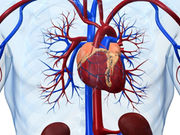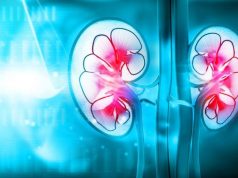Patients with sub-aneurysmal aortic dilatation have higher plasma D-dimer than controls
FRIDAY, Sept. 9, 2016 (HealthDay News) — Abdominal aortic aneurysm (AAA) progression is positively associated with increasing plasma D-dimer concentration, according to a study published online Aug. 27 in the Journal of Thrombosis and Haemostasis.
Esved Vele, from the Cantonal Hospital “Dr. Safet Mujic” in Mostar, Bosnia and Herzegovina, and colleagues examined the correlation between AAA progression and plasma D-dimer concentration over a 12-month period. Data were collected prospectively for 33 patients with an AAA, 30 patients with sub-aneurysmal aortic dilatation, and 30 control subjects. The authors assessed the greatest diameter of the infrarenal aorta by ultrasound, and determined D-dimer value at baseline.
The researchers identified a positive correlation between AAA diameter and plasma D-dimer concentration at baseline and the control measurement stages. Over a 12-month period there was a strong positive correlation between AAA progression and increasing plasma D-dimer concentration. The value of plasma D-dimer was higher for patients with sub-aneurysmal aortic dilatation compared with controls.
“There is a strongly positive correlation between AAA progression and increasing plasma D-dimer concentration,” the authors write. “As well, the higher value of plasma D-dimer in patients with subaneurysmal aortic dilatation possibly reflects the presence of microthrombi in the wall of the aorta, which could have an impact on the further progress and development of aneurysms.”
Abstract
Full Text (subscription or payment may be required)
Copyright © 2016 HealthDay. All rights reserved.








